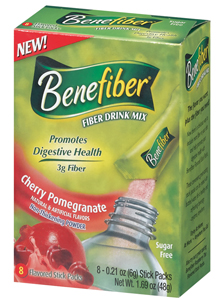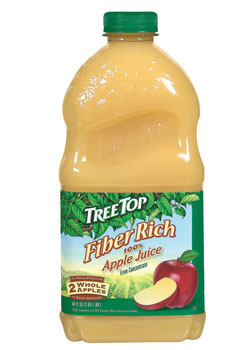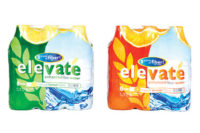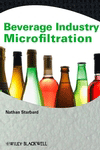
|
|
Fiber supplement brand Benefiber by Novartis offers a line of stick-packs that contain 3 grams of fiber from ingredients such as soluble fiber wheat dextrin. |
As consumers continue to look for functional food and beverages to supplement what’s missing from their diets, manufacturers continue to offer fortified options. When it comes to fiber, consumers can now find fiber-fortified snack bars, brownies and juice drinks.
Health Focus International’s 2011 U.S. Trend survey showed that 95 percent of American consumers are now aware of fiber, which is a 10 percent increase from the 2008 survey, says Lorraine Niba, business development manager of nutrition for National Starch, Bridgewater, N.J. The survey also found that 67 percent of consumers believe that all food categories can be improved for nutritional benefits, Niba says.
Decatur, Ill.-based Tate & Lyle reports that 77 percent of consumers are trying to increase the fiber in their daily diets, according to the ingredient supplier’s research. Fifty-two percent of consumers rate fiber as a very important or extremely important criterion when making purchasing decisions, the company says. Tate & Lyle reports that consumers prioritize fiber ahead of reduced sugar, added vitamins and minerals, antioxidants and reduced calories.
However, the addition of fiber into beverages requires certain considerations, says Adrienne Stuckey, food scientist at Tate & Lyle.
“In beverages, you don’t want any off-flavor, you don’t want any color, you don’t want any texture — you don’t want people to realize that they’re actually having a healthy fiber beverage,” Stuckey says.
The stealth health principle is particularly important with fiber-fortified products, says Matt Patrick, vice president of research and development for TIC Gums, White Marsh, Md.
“I believe we still might be in the world in which if you have ‘Great source of fiber’ plastered all over the front of the product, you’re going to have to very quickly convince the consumer that the product actually tastes great — not like a high fiber muffin that we had 10 years ago,” Patrick says. “You actually see that in some of the TV advertisements for products that are very fiber-focused. The sole purpose of the advertisement is to convince folks, ‘Yes, it’s got a lot of fiber, but it tastes good.’”
Harnessing benefits
As noted, consumers’ awareness of fiber has increased, but many consumers do not have more than a basic understanding of the specific benefits of fiber, Patrick says.
“The big difference now from the past few years is the basic understanding and acceptance of the health benefits of fiber are ubiquitous, but there may not be a complete understanding of the details or exactly the conditions that fiber is intended to help,” he says.

|
|
TreeTop’s Fiber Rich 100 percent apple juice offers as much fiber as two whole apples in each 8-ounce serving, the company says. |
TIC Gums specializes in gum systems and blends that naturally contain fiber and most of which boast at least 80 percent soluble fiber, Patrick says. The multiple benefits of the company’s gum systems help address a fortification challenge, he says.
“When developers are designing a nutritional-based product, they’re trying to pack various types of nutrients into a very limited serving size, and there’s only so much room within a food product to pack stuff in,” Patrick says. “As a result, ingredients now have to take on more than one role in these types of food products; [sometimes] they have to take on a double role or a triple role.
“For example, our ingredients contribute fiber, but on top of that, they can provide product stability, and on top of that they can actually manipulate the texture of the finished product to make it a more pleasing eating experience,” he continues. “Many times our ingredients are contributing to all three roles simultaneously in these products that are sometimes very difficult to design.”
TIC Gums presented a “decadent chocolate milk” prototype at the International Dairy Show last month featuring its Dairyblend MB-C2, which is a blend of gums containing cellulose, gels, carrageenan and guar.
The company specializes in custom gums and gum system blends to specifically address the stabilization and texturization needs of its customers, Patrick says. The multiple roles of TIC Gums’ ingredients can allow marketers to make a fiber and a texture claim on the package, he says.
Custom solutions also are a specialty of The Wright Group, Crowley, La. Sam Wright IV, chief executive officer of The Wright Group, notes that while more consumers are looking for fiber on food labels, many of them do not expect to find the ingredient in beverages. Wright expects that to change in the future.
“Some polysaccharide fibers can act as thickening agents where that is a desired element, and others, such as larch arabinogalactan and resistant maltodextrin, have no impact on viscosity,” he says. “It depends on what the formulator is trying to achieve. They also expect to find a reasonable percentage of their daily allowance in each serving. More sophisticated shoppers are also starting to demand prebiotic forms of fiber such as inulin, other oligosaccharides or larch arabinogalactan.”
Fortification proliferation
Health-conscious consumers also take into account a product’s taste, nutritional benefits and affordability when choosing and buying healthy foods, National Starch’s Niba says. The acquisition of the company by Corn Products International, Westchester, Ill., enhanced the company’s fiber portfolio and together the companies offer three soluble fibers that are suitable for use in beverages, she says.
For digestive health applications, National Starch and Corn Products International offer Nutraflora, a prebiotic soluble fiber with prebiotic activity at 1.1 grams per day. Nutraflora is a high-quality fructo-oligosaccharide that supports digestive health, Niba says.
Their fiber portfolio also includes Nutriose, which is manufactured by Roquette and distributed by National Starch. Nutriose is an instantly dispersible, clean-tasting soluble fiber that has been demonstrated to have satiety and weight management benefits, Niba explains.
Addressing immune health, the companies market Purimune, a high-purity, high-fiber galacto-oligosaccharide with excellent process stability, which helps to support the immune system, she says.
Beverage-makers who formulate with National Starch and Corn Products’ soluble fiber ingredients can make both nutrient content claims as well as structure function claims, Niba says.
Cargill Health and Nutrition, Minneapolis, also offers specific fiber ingredients for particular segments, including heart health, insulin sensitivity, satiety and weight loss.
The company’s Barliv barley betafiber is a concentrated beta-glucan soluble fiber derived from grain barley that has applicability in clear beverages. Barliv has been clinically shown to reduce cholesterol when consumed as part of a low saturated fat, low cholesterol diet and is authorized for a claim by the U.S. Food and Drug Administration, explains Pam Stauffer, global marketing programs manager for Cargill Health and Nutrition.
Cargill also offers Oliggo-Fiber inulin, which Stauffer notes is known as the “invisible fiber” due to its ability to be incorporated into almost any food or beverage without affecting taste and texture, she says. Recognized as a prebiotic ingredient, inulin supports the natural, healthful bacteria in the lower gastrointestinal tract and research indicates inulin might enhance dietary calcium absorption, Stauffer says.
Consumer awareness of prebiotic fiber owes an homage to probiotic-fortified food and beverage products, such as Yakult and Activia, says Joseph O’Neill, executive vice president of sales and marketing for Belgium-based Beneo Inc.
“To a significant degree, the development and marketing of probiotics has paved the way to the advancement of consumer understanding about fiber,” O’Neill says. “People who better understand and accept the benefits of probiotics are more receptive to and insightful about the fact that fiber is equally important, both for proper intestinal transit and overall health and well-being.”
Beneo offers ingredients derived from natural sources that can be incorporated into fiber-enriched beverages to help fulfill a “great taste and texture” promise as well as add health benefits, he says.
Tate & Lyle offers two fiber ingredients — Promitor soluble corn fiber and Sta-Lite polydextrose — that have flexible beverage applications, Stuckey says.
“When you juice the fruit, you get rid of the fiber, so if you add fiber it’s more like eating the actual fruit,” she says. “But you can use them in anything from [carbonated soft drinks] to flavored waters, even powdered soft drinks. We have agglomerated forms of our soluble corn fiber so you can put them in a stick pack and they dissolve right into water.”
The company’s Promitor soluble corn fiber is available in 70 or 85 percent fiber varieties in powder and liquid forms. The liquid form of Promitor offers an advantage for beverage-formulators that are used to handling liquid ingredients, Stuckey says. The powder form of the fiber ingredient also dissolves easily and clear in beverages. Promitor is low-calorie, natural and has excellent pH, temperature and chemical stability, she says.
Tate & Lyle’s Sta-Lite polydextrose is available in powder and liquid forms. The ingredient has 1 calorie per gram and has excellent pH, temperature, chemical stability and dissolves clear without adding any flavor, Stuckey says.
The company also is going to launch a soluble glucose fiber 70, which is a non-genetically modified organism (GMO) fiber product, Stuckey says. Although GMO is not a large concern in the United States, Tate & Lyle’s Stuckey notes it is an issue in the European market.
The collaboration between Decatur, Ill.-based Archer Daniels Midland Co. (ADM) and Japan-based Matsutani markets the Fibersol-2 digestion-resistant line of soluble corn fiber that has multiple beverage application options. ADM/Matsutani offers Fibersol-2 in powdered form, which can be used up to 10 grams in any given food and adds 0.2 grams of sugar to a formulation, says Käti Ledbetter, product development scientist for ADM.
The companies recently released Fibersol-LQ corn syrup that delivers 75 percent dietary fiber on a dry solids basis, Ledbetter says. Among other benefits, the liquid form of the ingredient is heat and acid stable and available in the form of a transparent solution, she says.
“Fibersol-LQ corn syrup is ideal for beverage applications as its liquid form and sugar content delivers fiber while also delivering 25 percent sugar content to help with sweetening aspects of beverages,” Ledbetter says.
Going forward, beverage-makers’ reputation for new products might place the category at an advantage, says National Starch’s Niba.
“Beverages are regarded as a category of innovation and health, therefore, a somewhat natural fit for fiber fortification,” she says. BI




